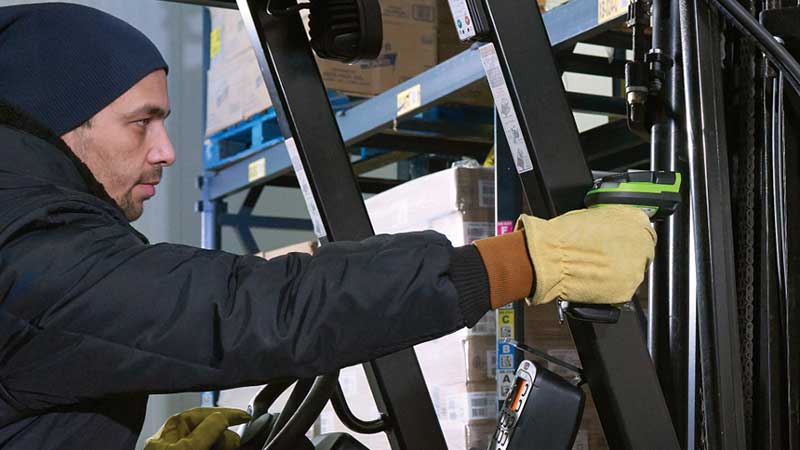
Survival of the Fittest: Seven Ways to Tell if Your Rugged Scanner is More Like a “Scammer”
The modern supply chain depends on fast and accurate scanning to maintain momentum and keep customers happy. Consider the number of workers who touch raw materials and finished goods from the factory to the final destination. Then consider the increasing volume of scans they complete on a typical day, and the rate at which those scans must be completed to keep pace with on-demand production and delivery expectations in our current “now” economy. If their scanner fails – or has a delay – for even a few seconds, then you could lose a significant amount of money. That’s because those two or three seconds are multiplied by, say, 10 workers each hour, which is then multiplied by eight hours per day, and then multiplied again by 250 days each year. Those few seconds can add up to real money lost.
I call this out because not all scanning technologies are created equal – and in Zebra’s experience, most would not survive these seven scenarios commonly encountered in a warehouse, on the loading dock, or during inventory transport, each of which could lead to seconds, minutes or even hours of scanner – and worker – downtime each day (unless they have an ultra-rugged scanner in hand):
1. Liquid spills, spray and dust
When rain is hammering the screen or the barcode scanner is splashed in a delivery depot, fair-weather rugged scanners may underperform or pack up entirely. So, we have assembled videos from various Zebra partners and employees who, for their own interest, decided to test rugged scanners in a way that simulates real-world scenarios. In speaking with those who led the tests in the videos you’ll see below, their goal was to understand if ultra-rugged scanners were indeed more immune to common on-the-job occurrences such as rain (via high-pressure water sprays), coffee spills and chemical wipe downs. (We just want to note that both corded and cordless ultra-rugged models from Zebra’s 3600 barcode scanner series were used in the testing videos featured below. Environmental specifications have changed - actually improved - since these tests were conducted, so please refer to the website for the latest information.) Not only did all of the ultra-rugged scanning devices tested easily meet IP67 standards, they withstood immersion for a full six hours, performing perfectly post-dunk! Dust-tight design qualities further prolong the life of these mission-critical devices, a necessity when used in open-air environments in particular.
You can even scan underwater should you need to, as demonstrated by Optiscan, one of Zebra’s EMEA channel partners:
And check out this water submersion test carried out by POSGuys, another Zebra channel partner:
Just don’t forget that the scanner itself isn’t the only solution component that could be exposed to these hazards. The scanner’s cradle may also need to be dust-tight and water resistant to IP65 standards.
2. Multiple tumbles and falls of up to 2.4m (without crash mat)
As floor availability shrinks, warehouses are placing shelving higher and higher and/or using mezzanine floors. The risk of scanners tumbling onto rock hard flooring is par for the course. Make sure you choose a scanner with a best-in-class drop rating, which should be determined by multiple tests onto concrete with no side effects. To properly show you what to look for, we filmed some drop tests in the Zebra Experience Centre in Bourne End at our European headquarters. As you’ll see, our tester, EMEA regional product manager Jose Echevierria, wore a hard hat but the scanner went without:
(As you can see, the Zebra 3600-series scanners are rated for multiple 2.4m drops over concrete – the highest in the industry. They’re also proven to be 23 percent more durable than any other ultra-rugged barcode scanner in their class.)
3. Extreme temperatures – from freezer to furnace
When rugged scanners are exposed to extreme hot or cold temperatures, risks include frozen triggers/buttons, ice damage or melting screens. It is critical that the device you choose is rated for the freezer with zero performance degradation over the entire operating temperature range. If you’re considering a corded model, ensure it can operate soundly from -30°C to 50°C. Some cordless models may offer a greater temperature tolerance range, typically operating from -20°C to 50°C. This is imperative for selecting a barcode scanner that will thrive in high humidity, cold storage environments, proximity to steam generating equipment or when left in direct sunlight (like a dashboard on a hot day).
In the following demo by the POSGuys, the ultra-rugged scanner still performs after 48 hours in the freezer, caked in ice. It is then road tested, quite literally. The ice is crushed, but is the scanner? Watch in this video:
4. PPE-proof scanning
Designing products with “situational disability” in mind is part of Zebra’s DNA – selecting products with this same consideration should be a priority during your scanner shopping and evaluation process. Users in environments that command personal protective equipment (PPE) – like thick gloves or ear protectors – wish to avoid wasting time removing gloves, mis-scanning or mishearing a successful scanning notification. To combat this, choose a scanner that has been tested and designed with an oversized scan trigger and extra-loud beeper with vibration feedback. It should be super accurate, even when the user has compromised mobility or senses.
5. Precise short- and long-range scanning
Dim or artificial lighting can affect scanning capabilities of less rugged scanners. That is why you need a scanner that can capture any size barcode in any lighting conditions. The greater the working range, the better. For example, even when access and space are limited, scanning should be flawless whether the target barcode is a hand’s-length away or up to 21.3 metres away. Yes, I realize that’s almost double the penalty kick distance (and a much smaller goal) for you soccer fans, but this is the goal that you really should be aiming for in your scanning technology selection.
18m is demonstrated here by Optiscan, just for reference:
6. Simultaneous capture
The scanner you choose should be able to capture all types of barcodes, optical character recognition (OCR), images, signatures and direct part marks. Scanning poor quality, dirty or damaged barcodes or those under shrink wrap or on a screen should also be effortless. I can tell you that is not going to be feasible with all scanners. Not even some rugged scanners. Ultra-rugged barcode scanners are not only designed with a greater level of physical protection, but many will deliver a significant performance boost too. For example, the best ultra-rugged scanners will boast multi-code functionality that captures and processes up to 20 barcodes simultaneously, with complete control over processing order. Just look at this video produced by Optiscan:
The label contains several barcodes but requires just one click.
7. Versatile and durable cordless connectivity
Mobility demands are mounting in today’s supply chain environments, driving greater demand for cordless barcode scanners. If you are one that needs this freedom, it could benefit you to consider a device that uses Bluetooth 4.0 (Low Energy) technologies. This technology helps to facilitate fast wireless communications with optimum energy efficiency. You may also want to consider a device that has a Wi-Fi Friendly Mode, as it will eliminate the wireless interference that Bluetooth devices may otherwise create in your Wi-Fi environment.
And don’t forget about Hazardous Locations (HazLoc). I’m talking environments where explosions are an occupational hazard, such as most oil and gas job sites. Though manufacturing and warehousing facilities that process hazardous materials – along with rail, road, air and maritime transporters – also have to consider worker safety and, thus, a HazLoc-certified scanner. A rugged scanner that is safe to use in potentially explosive environments helps to assure performance and protect workers. It’s like the ‘black box’ of scanners.
Something else to think about: The hazards outlined above are not exclusive to your traditional “rugged” industrial environments. How many times have your workers dropped an inventory scanner onto a concrete floor…at your point-of-sale location? Tossed the scanner in a shopping basket, and then tossed mounds of heavy returned items right on top? Spilled their drinks on the device? Or just otherwise handled it without a care?
The takeaway: Barcode scanners may be subject to rough handling and external hazards in every use case. Challenging their survival abilities in the face of both “normal” and extreme conditions can be critical. That’s why dropping, dunking and driving over scanners are a standard part of Zebra’s product user experience testing. Don’t be afraid to ask your sales representative to replicate such seemingly dramatic tests for you when shopping for scanners. As Zebra and its channel partners have done with the referenced videos, any scanner manufacturer should be willing to do as well.
###
Editor's Note: Think an ultra-rugged scanner is best for you? Or want to see what else these extremely durable barcode scanners offer inside and out? Take a closer look at these enhanced 2D Zebra scanners.
Editor’s Note: No Zebra scanners were harmed in the making of these videos.

Steve Mulroy
Steve Mulroy is a Product Marketing Manager, working in the EMEA Solutions Marketing Team at Zebra. Mr. Mulroy has more than 20 years of experience working in B2B technology in marketing and product management roles. At Zebra, he’s responsible for marketing launches and driving campaigns, specifically focusing on the Advanced Data Capture and Services portfolios and related solutions.




